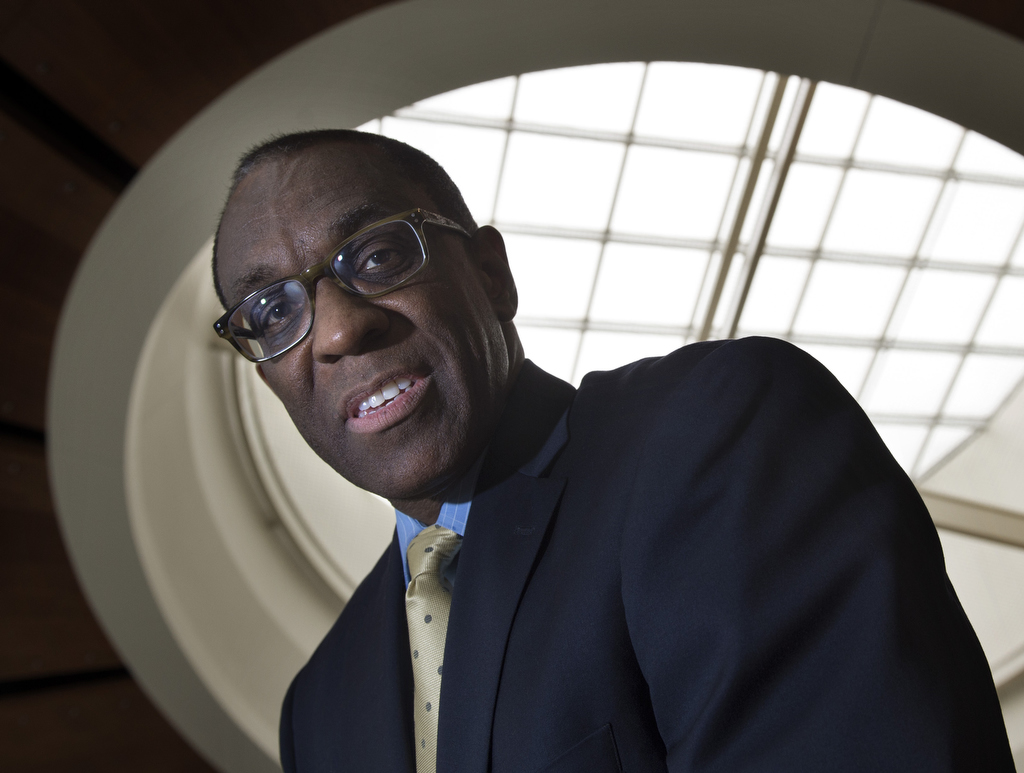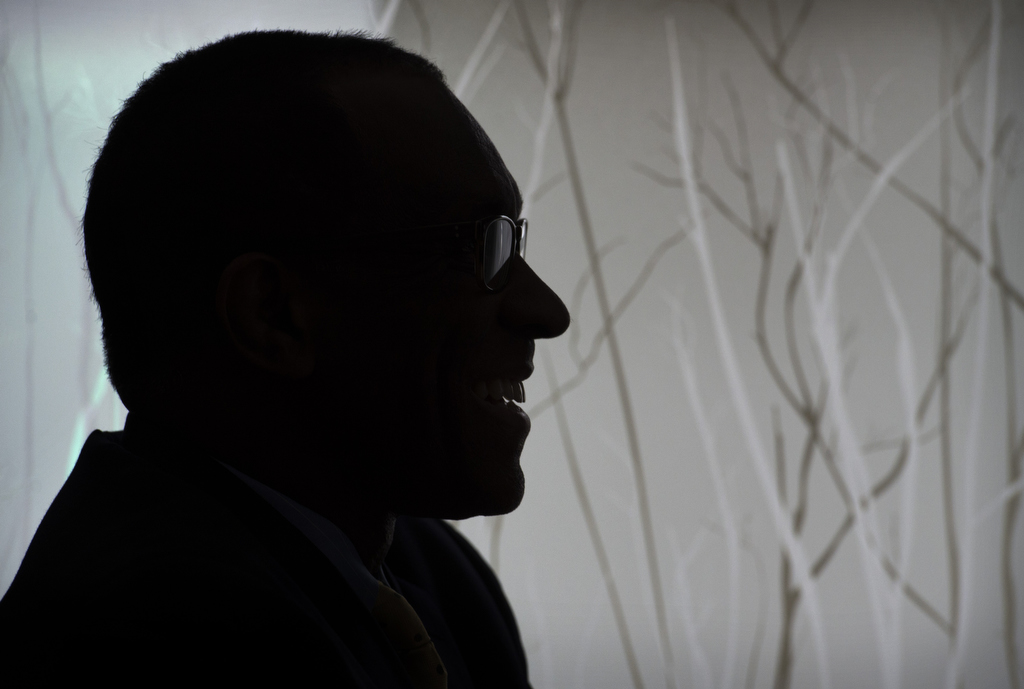Being diagnosed with prostate cancer wasn’t a matter of “if” but rather a question of “when” for Milton Roye.
While Roye’s father and uncle received and survived their diagnoses years ago, the Grand Rapids, Michigan, man found himself starting his own prostate cancer journey in 2013.
Now Roye is sharing his story to raise awareness about the not-often-talked-about cancer that 1 in 7 men will face at some point in their lives.
Roye monitored his prostate-specific antigen, or PSA, level for about 15 years. When the level started to rise to a point where it became “worrisome,” further testing revealed he had prostate cancer rated at a 6 on the Gleason scale, which is how the cancer is graded.
According to the American Cancer Society, about 220,800 new cases of prostate cancer are expected to be diagnosed this year.
Prostate cancer tends to run in families, and having a father or brother diagnosed more than doubles a man’s risk of being diagnosed himself. The cancer is also more common in men who have African or Caribbean ancestry.
So, you see, Roye knew it was coming. It was all in the statistics.
Upon learning the diagnosis, Roye told his wife, Gloria Lara. Roye, an entrepreneur and Boston native, said the news didn’t surprise him because he had long kept an eye on his PSA levels.
“My PSA had been going up,” he said. “I knew PSA was an indicator something was going on. It was more, OK, now that it’s gotten to this level, what’s the next step?”
Not the ultimate solution
Roye, then 58, said his training in engineering and belief in technology led him to having an interest in joining a research study through Spectrum Health to treat his cancer. He wanted to participate if it had the chance to help all men diagnosed with prostate cancer.
The study was only available for patients whose cancer was caught early, along with other specifications, said Sue Engerman, BSN, RN, a Spectrum Health clinical research nurse. Roye’s stage of cancer fit the bill.
Initial monitoring in June 2013 showed the one-time single injection experimental treatment two months prior didn’t eliminate his cancer, and two new areas of cancer were found. The new spots were considered low-grade with a Gleason 6 score.
For about a year-and-a-half, doctors continued monitoring Roye’s PSA level as part of active surveillance. During the first year, Roye’s PSA level remained stable and his physical exams were negative.
In December 2014, the original site tested negative for cancer; however, the two other spots found in June 2013 were still present and one had grown to a Gleason 7.
Roye’s PSA level also rose to 33.
Roye wasn’t too surprised at the news about his cancer. In the back of his mind, he knew it was a long-shot that he’d been cured.
The experimental treatment bought Roye time, and now he had to look at other available options.
“It worked, but it’s not the ultimate solution in my case,” he said.
Considering his options
The research study was no longer an option.
Brian Lane, MD, PhD, chief of urology for the Spectrum Health Medical Group and a key member of the Spectrum Health Cancer Center team, said the rise in Roye’s PSA level was concerning as anything greater than a 4 is on the high side.
Depending on the stage of the cancer, radiation and surgery are treatment options. It also depends on the patient’s preference.
“Every patient with prostate cancer has options,” Dr. Lane said.
Roye, 59, and his wife met with a multi-specialty team—a radiation oncologist, medical oncologist and a surgeon—at the Spectrum Health Cancer Center. The multi-specialty team started as a way to bring together multiple providers at one time, and it builds in the chance for patients to get second and third opinions.
“It took a lot of stress and strain out of it,” Roye said. “…It’s such a relief because I’m not a trained doctor to figure out who all I would go to and the quality is different.”
Optimistic about the future
In March 2015, Roye decided to undergo surgery to remove the cancer.
For more than three hours, Roye’s wife, his daughter, Katherine Roye, and a good friend waited and worried.
Despite meeting the team of surgeons taking care of Milton, Katherine, 25, said surgery was scary because of a chance something could go wrong.
Katherine tried staying busy watching Netflix, but she became increasingly anxious the longer time ticked on. Frequently she checked the electronic board in the waiting room that informs people of their loved one’s status during surgery.
When doctors informed them that surgery went well, Katherine said she felt “incredibly relieved and happy.”
Following surgery, Katherine moved back into her parents’ home to ensure her father had enough fluids and took his medication. They also spent time taking walks together during his recovery.
Taking steps forward
Although Milton was able to get up and walk around the day after surgery, it’s expected to be a year before all his functions fully return. Milton said he feels optimistic his health will continue to improve.
He’s focusing his time and energy on working with companies enhancing interactions with clients. In his spare time, he’s returned to his indoor rowing machine.
About every six months, Milton’s PSA level is tested. So far, they haven’t detected evidence of additional cancer.
Milton is using his experience as a way to open conversation and raise awareness about prostate cancer as his father and uncle did about their own diagnosis.
He said prostate cancer isn’t often talked about because people are scared about what they have heard and what they haven’t yet heard.
Another reason men don’t talk about this particular cancer is because they tend to be guarded about their health when it affects their sexuality.
Milton encourages men to have their PSA checked by visiting their physician.
“The earlier you catch it, the more options you have,” Milton said.
When it comes to starting conversations with loved ones about prostate cancer and getting checked, Dr. Lane said it’s important to let the person know they are cared about and they should take the proper steps to monitor their health.
“It’s something that’s a daily part of life,” Dr. Lane said.








 /a>
/a>
 /a>
/a>
 /a>
/a>
I enjoyed Roye’s Journey with Prostate Cancer it has helped me with mine also, I go to the same Spectrum Health building with the same issues and currently in after treatment with my Doctors there.It has been a long journey. With faith in God and family you can make it.”Never Give up the fight”
Thank you for sharing your story. I too am a survivor of Prostate cancer. I also was treated here at Spectrum Health under Dr. Lane. Its great to see others sharing this so men of all ages can better understand Prostate cancer and the options we have available to us. I have my family by my side helping me recover ever day and feel blessed for it.